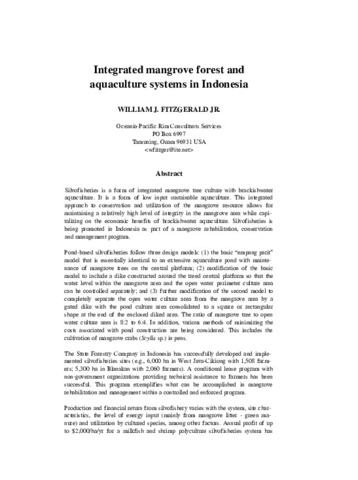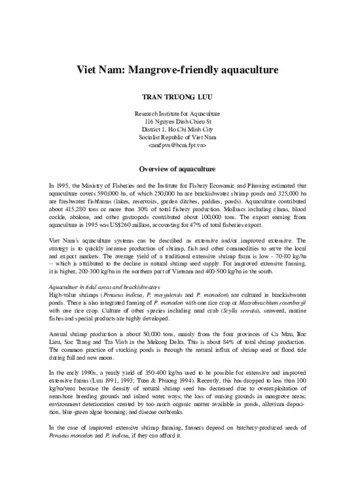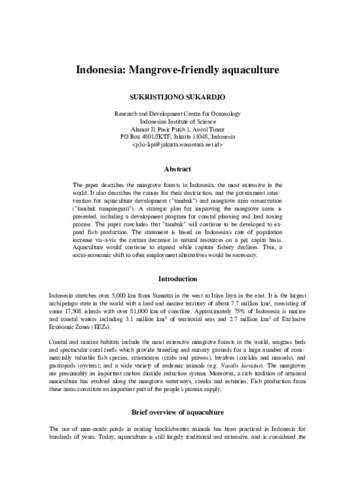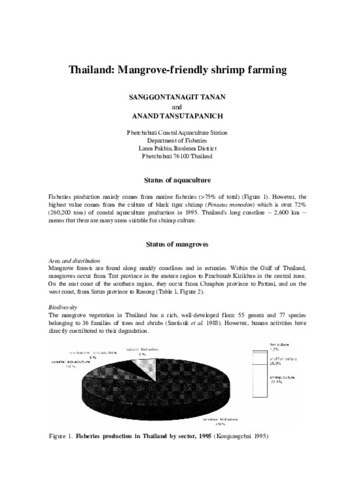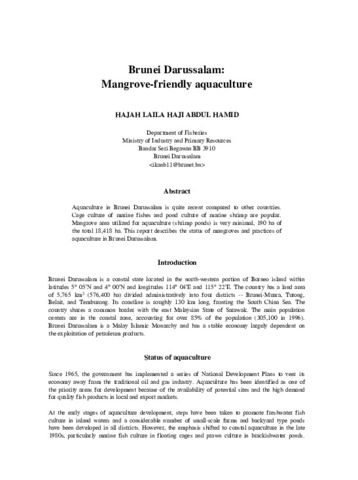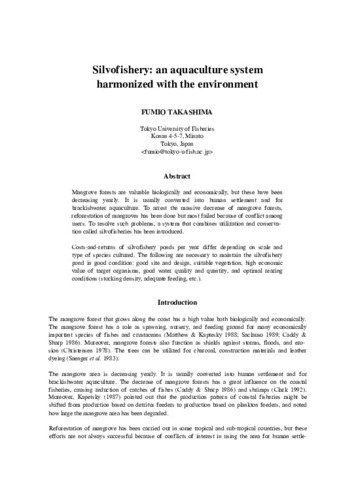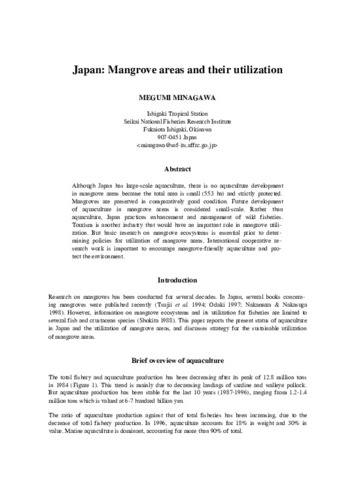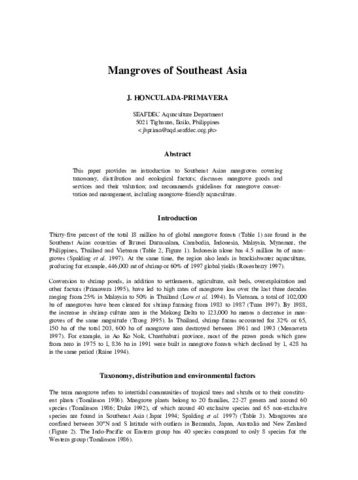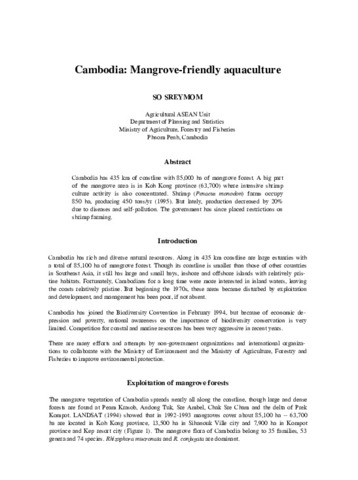Search
Now showing items 1-10 of 11
Integrated mangrove forest and aquaculture systems in Indonesia
(Aquaculture Department, Southeast Asian Fisheries Development Center, 2000)
Silvofisheries is a form of integrated mangrove tree culture with brackishwater aquaculture. It is a form of low input sustainable aquaculture. This integrated approach to conservation and utilization of the mangrove ...
Viet Nam: Mangrove-friendly aquaculture
(Aquaculture Department, Southeast Asian Fisheries Development Center, 2000)
Indonesia: Mangrove-friendly aquaculture
(Aquaculture Department, Southeast Asian Fisheries Development Center, 2000)
The paper describes the mangrove forests in Indonesia, the most extensive in the world. It also describes the causes for their destruction, and the government intervention for aquaculture development ("tambak") and mangrove ...
Thailand: Mangrove-friendly shrimp farming
(Aquaculture Department, Southeast Asian Fisheries Development Center, 2000)
Mud crab (Scylla serrata) culture in tidal flats with existing mangroves
(Aquaculture Department, Southeast Asian Fisheries Development Center, 2000)
The performance of the mud crab Scylla serrata (Forsskal) in 200 m<sup>2</sup> pens installed in tidal flats with existing mangroves was determined in a factorial experiment with stocking density (0.5 or 1.5/m<sup>2</sup>) ...
Brunei Darussalam: Mangrove-friendly aquaculture
(Aquaculture Department, Southeast Asian Fisheries Development Center, 2000)
Aquaculture in Brunei Darussalam is quite recent compared to other countries. Cage culture of marine fishes and pond culture of marine shrimp are popular. Mangrove area utilized for aquaculture (shrimp ponds) is very ...
Silvofishery: An aquaculture system harmonized with the environment
(Aquaculture Department, Southeast Asian Fisheries Development Center, 2000)
Mangrove forests are valuable biologically and economically, but these have been decreasing yearly. It is usually converted into human settlement and for brackishwater aquaculture. To arrest the massive decrease of mangrove ...
Japan: Mangrove areas and their utilization
(Aquaculture Department, Southeast Asian Fisheries Development Center, 2000)
Although Japan has large-scale aquaculture, there is no aquaculture development in mangrove areas because the total area is small (553 ha) and strictly protected. Mangroves are preserved in comparatively good condition. ...
Mangroves of Southeast Asia
(Aquaculture Department, Southeast Asian Fisheries Development Center, 2000)
This paper provides an introduction to Southeast Asian mangroves covering taxonomy, distribution and ecological factors; discusses mangrove goods and services and their valuation; and recommends guidelines for mangrove ...
Cambodia: Mangrove-friendly aquaculture
(Aquaculture Department, Southeast Asian Fisheries Development Center, 2000)
Cambodia has 435 km of coastline with 85,000 ha of mangrove forest. A big part of the mangrove area is in Koh Kong province (63,700) where intensive shrimp culture activity is also concentrated. Shrimp (Penaeus monodon) ...

